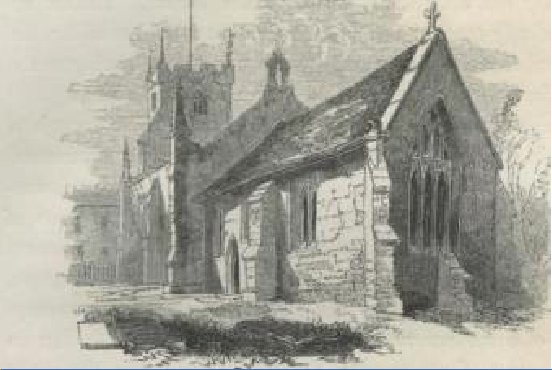The Evidence of W.H. BARLETT.Author of “The Pilgrim Fathers” – 1853.
One of the most prominent individuals hereafter connected with the Pilgrims—-although he did not join them until their retreat to Leyden—was Captain Myles Standish, a man whose iron nerve and dauntless energy of character went far towards, carrying the infant society through the perils with which it was menaced;—short of stature, but sinewy and robust, and with a constitution of iron and an intrepidity that no peril could quail. His temper is said to have been somewhat too soldier-like— " sudden and quick in quarrel;" but, on the other hand, his promptitude and decision in an alarming crisis proved, probably, the very salvation of the colony. He was an offshoot of one of the oldest families in Lancashire—the Standishes, as we are informed by local historians, having flourished there from about the time of the Conquest, and, as will be seen from the following details, played no obscure part in English history.
John Standish was one of the king's servants, and one of the first who wounded Wat Tyler after he had been felled by the Lord Mayor of London, for which he was knighted, together with the Mayor and citizens. (4th Richard II.)
Sir Ralph Standish was a commander under Henry V. and VI., in the French wars, and fought at the battle of Agincourt; and Sir Alexander Standish was knighted for his valiant behaviour at Hutton Field, in Scotland, 1482. Ralph Standish, of Standish, married Philippa, daughter of Henry duke of Norfolk, and, being found in actual rebellion against his Majesty King George, his estate was seized; but he escaped with his life, and his estate was afterwards restored.
Henry Standish, of this family, a Franciscan friar, Bishop of St. Asaph, 1519, was esteemed a very learned man. He accompanied Sir John Baker, ambassador to Denmark from 1526 to 1530, and was one of the bishops who assisted and directed Queen Catherine in the suit concerning her divorce from Henry VIII.
Myles Standish inherited in a pre-eminent degree the military spirit of his ancestors, but nothing else; for, according to Morton, " he was heir-apparent unto a great estate of lands and livings, surreptitiously detained from him ; his great-grandfather being a second or younger brother from the house of Standish." Compelled thus to seek his fortune, he chose the profession of arms, and served in the troops sent over by Queen Elizabeth to assist the Dutch in maintaining their struggle for liberty and Protestantism against the Spaniards. Here he fell in with the Pilgrims, and, though not a member of their church, yet, admiring their principles, and attracted by the love of adventure, he resolved to cast in his lot with theirs, and share their enterprise to America.
There are many memorials of the Standishes still existing. From the windows of my quiet retreat at Newchurch I could see Standish church and the long ridge of Rivington Pike above Duxbury, a land-mark to all the country round. A very short run on the railway brought me to the manufacturing town of Wigan, where one of the streets still retains the name of " Standish Gate." Soon after, we were deposited at the Standish station—a little Gothic cottage, with its neat garden and trailing flowers, such as can only be seen in England. Scarcely a stone's throw distant is the rectory—one of the best in Lancashire, and the advowson of which has belonged to the Standishes for 700 years. It should be remarked here that there are two branches of this family—the one at Standish, and the other at Duxbury—and that there has been no end of litigation and dispute with regard to the property, so that, as an old man in the neighbourhood observed, " it seemed as if there were a spell hanging over it." Passing the rectory-house, we soon reached the church, which stands adjacent to the town on a bold rising ground, commanding what must once have been a magnificent prospect. But the aspect of this district has greatly altered since the days of Myles Standish. The manufacturing system, which has since attained such stupendous development, was then in its infancy, and where tall chimneys and coal-pits vomit forth clouds of sable smoke, there was nothing but the greenness and freshness of pastoral nature. The parish of Standish abounds in these pits, which are a considerable source of wealth; and nothing can be more dingy than the town, unless, perhaps, its still more dingy denizens, who, begrimed with the smoke and coal-dust of the pits, seem as though they had just emerged from the infernal regions.

